Speed cameras are proven to encourage safe driving behaviour.
Keep exploring as more information will be added
over the coming months.
Mobile phone detection cameras are operating in South Australia.
For camera locations and current information, visit:
THINK! Mobile Phone Detection Cameras
reduction in injury crashes at intersections where a fixed camera was installed.
Speed and red light cameras (previously known as safety cameras) are there to save lives.
We have a speed camera program because research shows that travel speed affects both the risk of a crash occurring and the severity of injuries that may occur.
For example, if you travel 10 km/h over the speed limit in a 60 km/h speed zone, you are approximately four times more likely to be involved in a casualty crash - which is a similar risk to driving with a blood alcohol concentration of around 0.10 g/100ml, twice the legal limit.

Speed and red light cameras operate in South Australia to discourage speeding and red light running.
Fixed speed and red light cameras use a sensor in each road lane to detect vehicles passing the camera and to measure travel speeds. Mobile cameras use radar to detect each vehicle’s travel speed.
If a vehicle is detected exceeding the speed limit or running a red light, the camera and flash are activated to take a photo and a fine is issued.
The key types of cameras include:


If you are caught exceeding the speed limit, you'll have to pay the expiation fee or go to court and you'll incur demerit points. If you accumulate too many demerit points, you will lose your licence.
Use our interactive table below to learn more about the fines and penalties associated with speeding:
Speeding over the speed limit and being captured by a speed camera could mean:
PLUS a 6 month loss of licence. Police may also wheel clamp or impound an offender’s vehicle.
Note, the above fine amounts do not include the Victims of Crime Levy.
For information about road traffic offence penalties refer to the MyLicence website.

Apart from the Victims of Crime Levy, all funds collected through fines from speed and red light cameras are returned to road safety through the Community Road Safety Fund, which helps pay for a wide range of key road safety initiatives including education, engineering improvements and targeting enforcement programs where it is needed most to improve road safety for all road users.
Learn more